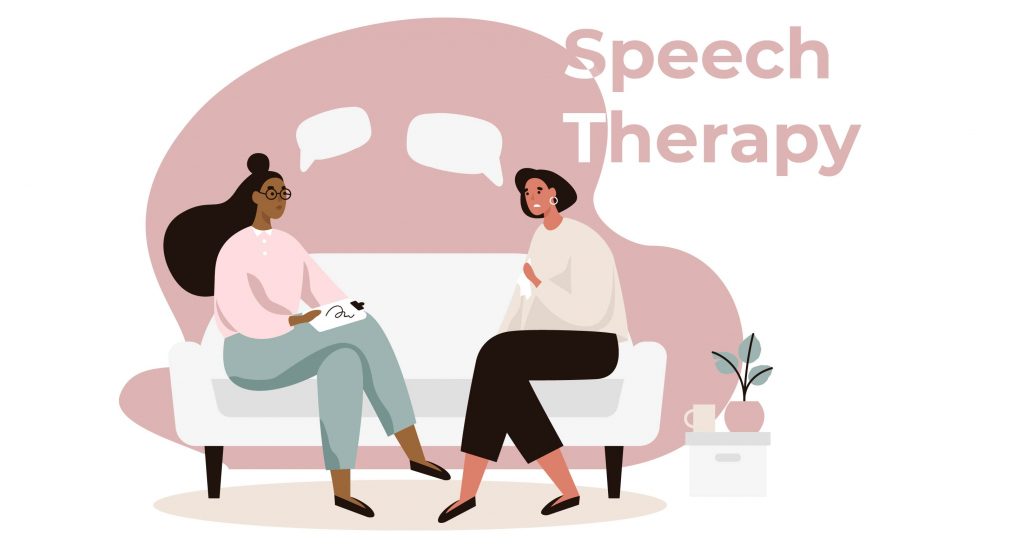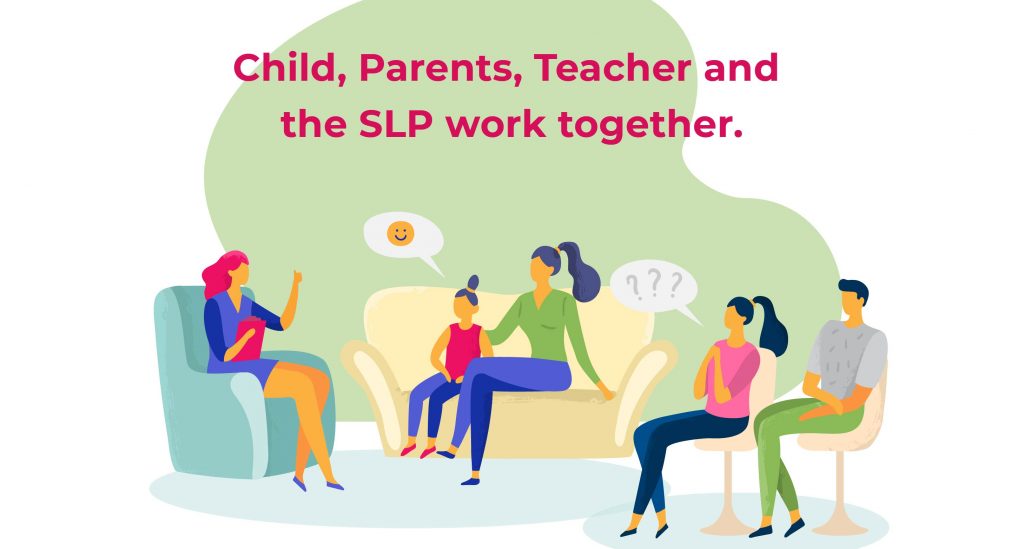What is the treatment for stuttering?
Do you stutter? Or, is it your child, who’s showing symptoms of stammering? Stuttering can make it extremely difficult for anyone to express what they are feeling. Which is why getting help from a speech-language pathologist (SLP) is extremely necessary for those who stutter. Treatments for stuttering are most effective when they are started in the earliest.
Treatments for stuttering vary depending on the severity and the age of the person who stutters.
Treatment for a pre-school aged (2 to 3.5 years of age) child who stutters
Let us begin with the potential treatment for a child who stutters. The team typically consists of the child, the child’s parents and other family members, even their teacher and the SLP. The child’s treatment plan depends on the following –
- How much the child stutters
- The child’s language and speech skills
- The child’s reaction to their own stuttering
- The impact of stuttering on the child’s everyday life
- Others’ reaction to your child’s stuttering
The treatment approach includes either one or both of these strategies –
Integrated strategies
An integrated strategy involves the clinicians counselling the parents to reduce their level of anxiety and fear about their child’s speech impediment. The initial focus is always alleviating the concern of the parents and other family members. It is also about understanding the concerns of individual family members and guiding them towards making changes in family-child communications.
Direct strategies

During direct treatment, the SLP interacts with the child to understand their fluency problems and facilitate improvement. Speech modification, stuttering modification, and reduction of secondary behaviour are parts of direct treatment for children.
Indirect strategies

Family members are the key players in indirect treatment approaches. The SLP focuses on counselling the family members regarding necessary changes in the child’s environment that can support fluency. It may include the reduction in the rate of communication, and rephrasing sentences to facilitate fluency.
Treatment of stuttering in older preschool-aged children (3.5 to 6 years)
Children of this age may have begun stuttering very recently or may have been stuttering for several months. Thus their parents are well aware that it is not a transient speech issue. It is common for children of this age group to feel negative about their stutter.
Typical core behaviour of this age-group includes partial repetition of words, rapid and irregular rhythm of speaking, and some prolongations. The SLP may notice excessive tension during the repetition and prolongations. Secondary behaviour also become noticeable by the time the child is of older preschool age. Such secondary behaviour may include rapid blinking, eye twitching, twitching of the lips, head nodding and sudden increase in pitch.
However, strong fear is still absent from most candidates of this age group.
Charles Van Riper advocates the Lidcombe Program for older preschool-aged children. The SLP teaches the guardians of the child to reinforce his/her fluent speech. Only then the SLP teachers the parent how to respond to stutters. The parent of the child who stutters is supposed to use varied and situation-appropriate verbal contingencies after distinct fluent speech. However, the parent must only use gentle comments on the child’s stutter. The parent can also ask the child to repeat the stuttered word ever so gently.
The Lidcombe program involves several clinic visits with the child. During the first visit, the SLP determines the severity score of the child’s stuttering. All subsequent clinic visits involve multiple goals –
- Assessment of the child’s current stuttering
- Discussion of the child’s and parents’ progress
- Introduction of new techniques, when the SLP deems it appropriate
Although the fluency goal of every individual who stutters tends to be different, preschool-aged children who have only stuttered for months may reach desired fluency or regain spontaneous fluency within a year or two of the conclusion of the treatment.
Older preschool-aged children may not have any recollection of their stutter. They may not require speech monitoring later in life as well.
Treatment for school-age (6 to 14 years of age) children who stutter
By the time a child reaches 6 years, their stuttering core and secondary behaviours are well developed. Therefore, they require more-than-one goal-based approaches depending on their unique necessities. Children of this age exhibit complexities in disfluent behaviour since fear, anxiety, embarrassment and avoidance become part of their habit.
The approaches for school-aged children and adolescents who stutter are different from those used for preschool-aged children.
Strategies to reduce the impairment of body function
Most SLPs use a combination of speech modification and stuttering modification to improve the fluency of a school-age child, who stutters.
Speech modification strategies may include –
- Control of rate
- Continuous phonation
- Prolongation of syllables
- Loose articulatory contact
- Easy onset
Stuttering modification strategies typically reduce the speaker’s physical tension. According to techniques introduced by Van Riper in 1973, stuttering modification helps the individual learn about speech mechanism during disfluencies and also during a fluent speech.
Increasing their awareness about the speech mechanism and teaching them self-monitoring skills can help reduce the frequency of stammering. It can help children modify the moments of stammering and make them less tense.
Reduction in avoidance of words
Children often cope with stuttering by avoiding certain words or introducing interjections (“uh”, “um”). Speech therapy for stuttering can help children increase the spontaneity of their conversations by improving their fluency. SLPs work towards reducing avoidance behaviour in children and early teenagers so they can say exactly what they want to say and the way they want to say it!
Reducing negative reactions
Desensitization, self-disclosure, cognitive restructuring and support are the three main approaches that aid in reducing the negative reactions an individual may associate with their stuttering.
- Desensitization – the SLPs help individuals face their fear of stuttering in carefully structured environments. It prepares them for real-life situations.
- Self-disclosure – it is popular as “Advertising” in the stuttering community and therapy sessions. It involves conversing about stuttering, how it affects the individual and offer advice on responding to an individual who stutters. For school-aged children, it is often achieved via a classroom presentation.
- Cognitive restructuring – it is also referred to as counselling, where SLPs or therapists can help individuals, who stutter see themselves in a new light. They can learn to identify their negative emotions and attitudes, and their influence on their speech.
- Support – it can be in the form of group activities, daily exercises within the family or structured venues for practising activities the individual has learned from the sessions with the SLPs.
Encouraging approach behaviours in individuals who stutter
SLPs don’t restrict treatment inside the therapy room. It is important for the child to find the courage and confidence to display their acquired speech strategies and participate in discussions outside the treatment room. Often phone conversations and video conferencing techniques are used by SLPs to encourage a child’s generalization activities.
Treatment of stuttering for teens and adults who stutter
The treatment for teens and adults who stutter can be long-term and intensive because their core and secondary behaviours are more difficult to alter as compared to children. Teenagers and adults can opt for treatment on an individual or group basis.
Currently, the individual may opt for treatment that offers the following forms of therapy –
- Block modification – The goal of this treatment is not to achieve complete fluency, but to help the individual stutter with more ease.
- Avoidance reduction – The aim is to enable the individuals to accept their stuttering and give them the confidence to speak in situations that they would rather avoid.
- Fluency modification – Slowed speech and prolonged speech are popular treatment techniques SLPs use for adult and teenage clients. The aim is to replace stuttered speech with a prolonged or slowed speech in the clinic set up and then extend the techniques outside the treatment room.
- Psychological approaches – Personal construct therapy (PCT) and cognitive behavioural therapy (CBT) are two of the most sought after ways that help the client reflect upon the influence of stuttering on their life. It is especially necessary for teenagers and adults, who may have already faced considerable ridicule, differential treatment and bullying at high school or work due to their speech disfluencies.
Treatment for stuttering at any age share a few common goals which include the improvement of fluency, increasing their understanding of stammering and share their experiences with fellow individuals of similar age who stutter as well.










